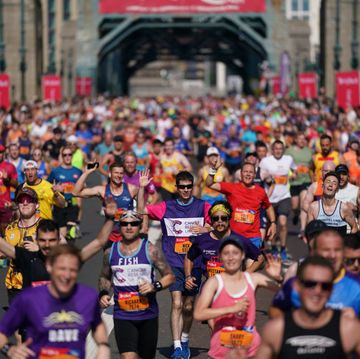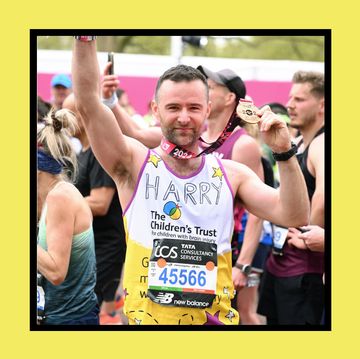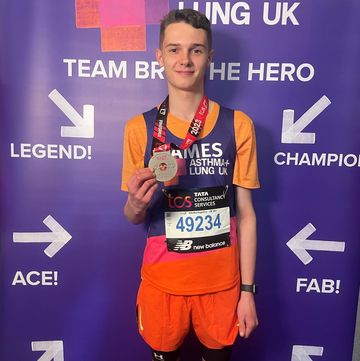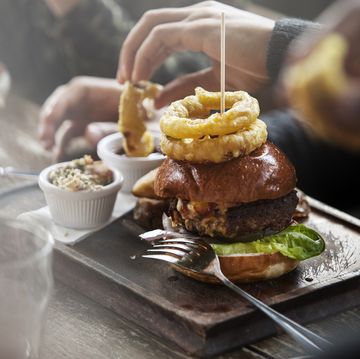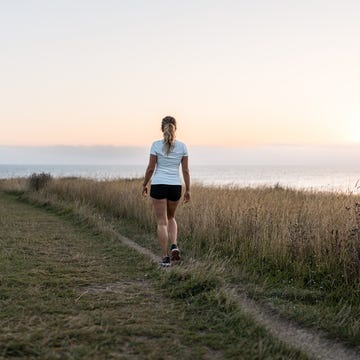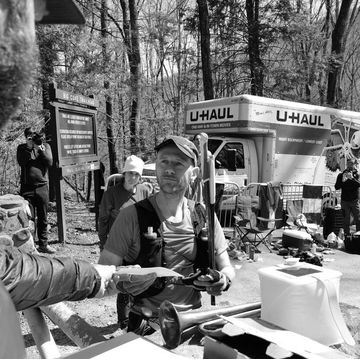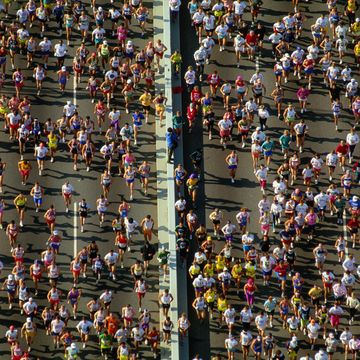If the forecast for race day ends up being warmer than you’d hoped, sorry - it’s bound to happen to every runner at some point. How much slower you’ll run depends on a variety of factors, including how hot it is, how humid it is, how sunny it is, how acclimatised you are and so on. That said, it’s still possible to run a smart race. Here’s how.
Hydrate well...
Drink enough in the days before the race - aim for light yellow urine. Take in 100-200ml of water or sports drink on race morning, then replenish at aid stations along the way. An advantage of sports drinksis that they contain electrolytes, which increase your water-absorption rate and replace the electrolytes you lose in sweat. But don't overdo it with water or sports drink - if your fingers start to swell, that could be an early warning sign of hyponatremia (a dangerous condition that can occur from overdrinking).
…and avoid drugs and drinks that dehydrate
Alcohol, antihistamines, and antidepressants can all have a dehydrating effect. Using them just before a run can make you have to pee, compounding your risk of dehydration - it's worth being aware of this if you take any prescribed medication so you can keep an eye out, but of course don't stop taking the medication purely for this reason. Drink-wise, save the celebratory beer for after the race. In the short term, caffeine can dehydrate you as well, also by increasing your urine output. If you're used to drinking coffee before you race, consider having half as much as usual.
Cover your body
Wear apparel that’s light in colour, lightweight and has vents or mesh. Wicking fabrics are a must. Consider wearing a cap - or better yet, a visor - and sunglasses to reduce heat build-up in your head. Pre-run, apply a broad spectrum, sweat-proof sunscreen of SPF 30 or higher to all exposed skin.
Lower your expectations
Accept the fact the race will likely be more difficult than anticipated. Every 2-3°C rise in temperature above 15°C can slow your pace by as much as 20 to 30 seconds per mile. Start slower than planned, and make getting to the finish running strong your main goal. Run by perceived effort rather than mile splits.
Douse yourself
At the aid stations, take one cup of water to drink, and another to pour over your head. If necessary, slow and/or walk at aid stations to get enough fluids.
How heat can hurt
Heat cramps
Cause: Dehydration leads to an electrolyte imbalance
Symptoms: Severe abdominal or large-muscle cramps
Treatment: Restore salt balance with foods or drinks that contain sodium
Heat fainting
Cause: Often brought on by a sudden stop that interrupts blood flow from the legs to the brain
Symptoms: Fainting
Treatment: After the fall, elevate legs and pelvis to help restore blood flow to the brain
Heat exhaustion
Cause: Dehydration leads to an electrolyte imbalance
Symptoms: Core body temperature of 39-40°C, headache, fatigue, profuse sweating, nausea, clammy skin
Treatment: Rest and apply a cold pack on head/neck; also restore salt balance with foods and drinks with sodium
Hyponatremia
Cause: Excessive water intake dilutes blood-sodium levels; usually occurs after running for four or more hours
Symptoms: Headache, disorientation, muscle twitching
Treatment: Emergency medical treatment is necessary; hydration in any form can be fatal
Heat stroke
Cause: Extreme exertion and dehydration impair your body’s ability to maintain an optimal temperature
Symptoms: Core body temperature of 40°C or more, headache, nausea, vomiting, rapid pulse, disorientation
Treatment: Emergency medical treatment is necessary for immediate ice-water immersion and IV-fluids




